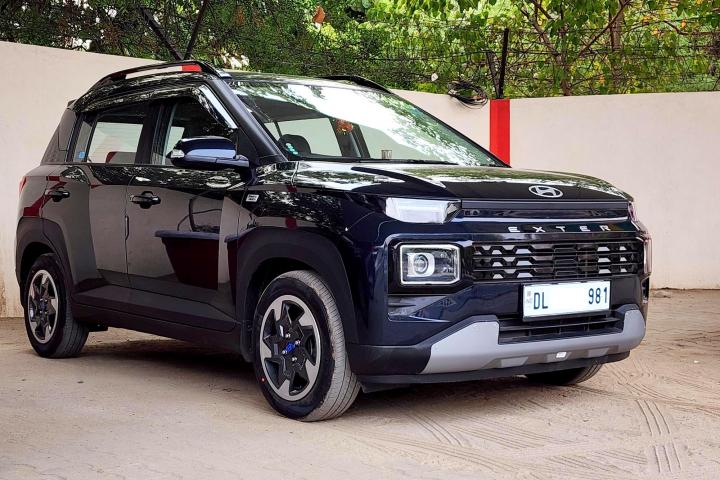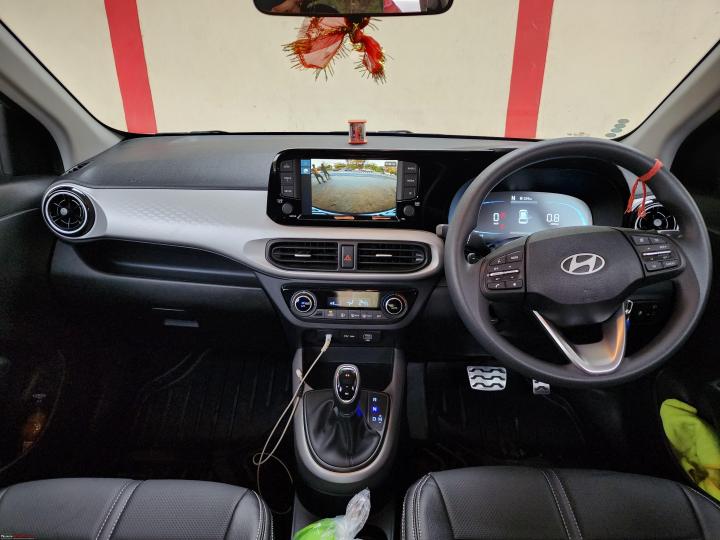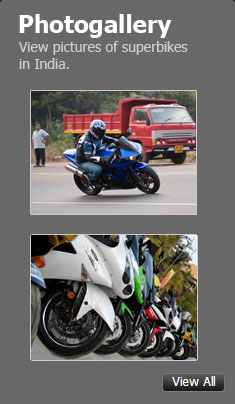News
Replaced our 2 Maruti cars with a Hyundai Exter: Ownership experience
The Baleno had only clocked around 20,000 km in four years, and with the entry of the Alto K10 in the garage, the running dropped even further.
BHPian forester recently shared this with other enthusiasts.
This is the story of how we – me and my wife – brought home the Exter last month to replace our beloved Baleno 1.2 MT and the new Alto K10 AGS that we procured last year for my wife to learn driving on.
While the Baleno was exchanged for the Exter at the Hans Hyundai showroom in Moti Nagar, New Delhi, the 5,000km-driven new K10 was handed over to my kid sister-in-law for her to learn driving on. So, the lovely, nimble, and fantastic K10 gets retained in the family.

The decision-making process – why go from 2 to 1?
The idea stemmed from the fact that both cars were seeing minimal running due to the nature of our work, particularly mine, where I have a work-from-home liberty. The Baleno had only clocked around 20,000 km in all of four years, and with the entry of the K10 in the garage, the running dropped even further.
The fact is, I would prefer taking the keys of the K10 on most occasions of visiting the local markets or nearby areas, which remain completely choc-a-bloc due to excessive traffic density in our part of the city. The nifty little car ensured a stress-free commute during evenings – our typical vehicle usage pattern over the last few years.
With its wide dimensions, and large proportions, the Baleno was a bit too tough to handle in dense traffic conditions, and that is the reason why we took the decision to buy a small automatic for my wife in the first place. Her keen interest to learn driving and becoming independent, and my constant endeavour to teach her the best practices of defensive driving on our roads, saw her emerge as a good driver within a year.
Heck, we soon realised how much she enjoyed driving, and would veto to take the K10 out most of the time, so that both of us could take the driving duty alternatively. She would usually be the one driving on the onward journey, while I would drive back home. The well-cared-for Baleno was getting neglected significantly, and I would consciously make it a point to keep it running every few days.

Moreover, with two cars in the garage, I had already started making comparisons as to how the suspension and handling were so much better in the K10. Maruti Suzuki has just hit it out of the park with the new K10 with its notably better build quality, spacious cabin, a chiller of an AC, and a lovely ride-and-handling setup.
The last-gen Baleno that we had was completely different in nature. Barring the butter smooth 1.2-litre, four-cylinder K12MN, the Baleno’s suspension felt too stiff in comparison, while the steering felt lifeless at anything above 70kph. Perhaps that was one of the key reasons that I did not drive it all that much, and the few inter-city trips that we did during the fuss-free ownership, did not leave me impressed either.
As soon as the Exter was launched last year at a super aggressive pricing, my wife, who had taken a loan on the K10, realised how expensive the entry-level Maruti would cost her at the end of the loan tenure. With an on-road price of Rs 6.10 lakh, the K10 VXi AGS would have cost us Rs 7.5 lakh, at the end of 7 years, if we were to continue dragging the loan till its stipulated time.
The thought of a bare-bones car costing that much did not really strike a chord with her, who would now look for electronically adjustable ORVMs, a reverse parking camera, and seat height adjustment, as some of the key requirements to become an even better driver, and enhance her confidence.
She was constantly insisting on exchanging both the cars for one, and without shelling out anything extra from our pockets, just getting one all-rounder that did most of the duties. While the Alto is a perfect city runabout even in today’s age, it will not get you respect, especially on Delhi-NCR's roads due to its size.
We mulled over the idea and went to see the Exter sometime in August last year, but I could simply not fathom the Exter’s looks. However, the better half liked it and was impressed with its quality and features on offer. I half-heartedly got both our cars evaluated, and obviously, we were getting a big hit on the K10 if we sold it in the first year.
The math – no extra spend
Despite an estimated 25 percent depreciation on the K10, the Exter SX AMT’s Rs 10 lakh on-road pricing meant that we did not have to shell out a single penny from the pocket to make this two-to-one conversion. The annual insurance premium would also remain similar to what we were paying for the two cars. However, I resisted this idea, and preferred having the convenience of two cars, and the choice of an MT and an AMT, in the garage. I decided in my mind to replace the Baleno a couple of years down the line with a proper automatic.

My logic prevailed, and we dropped the idea for the interim, with the wife again initiating it sometime end of 2023, when there were lucrative schemes across all brands. We even test drove the Swift, which she loved, but eventually dropped the idea again, as a new one was just around the corner.
I went ahead with the annual insurance renewal of the Baleno in December, and followed it up with the annual servicing in January – its 40,000km service routine – which was done at half the kilometres on the odometer. The car was well maintained and in the pink of its health, and went to its next owner within a week of handing it over to the Hyundai dealership.
Biting the bullet
Come March 2024, and the topic resurfaced. This time, the sister-in-law was returning to Delhi after getting a job transfer from Mumbai and wanted to learn driving, and had heard several praises about a clutch-less vehicle from my wife. My father-in-law who owns a Swift manual was now being convinced to trade in his car to get an AMT.
While I thought the Exter would suit my in-laws’ requirements to the T, destiny had something else planned for us. My wife came up with the idea of handing over (selling) the K10 to her sister, and letting my FIL retain his Swift for a few more years. Her logic was very clear that my father-in-law would be very hesitant to let my sister-in-law learn in a brand-new car, and she would miss the chance to learn this vital skill at the right age.

I found her argument valid and finally agreed to go ahead with the decision to replace both our cars – Baleno and K10 – with a single automatic within a budget of Rs 10 lakh. The Hyundai Exter SX AMT was the top consideration from the get-go. But…
The selection process
My biggest reluctance in making this switch was coming from the fact that we were considering getting an AMT as the primary car of the household, as one does not get a proper automatic option in the Rs 8-10 lakh price bracket. As it became evident that we will have to take the plunge this time around, I expanded the consideration set, and included the Nissan Magnite CVT, and Honda Amaze CVT in the picture.
While the wife liked the way the Magnite drove, she just stuck to her line on making a prudent choice, and simply staying away from the Nissan brand in India. The Amaze VX CVT, on the other hand, was also falling right in our budget with the sweet end-March deals, but while the seats felt short on thigh support, the front co-passenger footwell was non-accommodating for my height – 5’8".
I felt uncomfortable sitting in the Amaze, and the shortcomings further extended to a lack of features such as a shift-lock-release button, auto-folding ORVMs, and six airbags, which eventually Honda made standard in both Elevate and the City, leaving just the current-gen Amaze as is, until the new model arrives. On the other hand, The Fronx Delta Plus AMT was rejected owing to the lack of height adjustment on the driver's seat, and wide exterior dimensions that would make it cumbersome from a manoeuvrability standpoint.
The Tata v/s Hyundai debate
By now, my wife was clear about the Exter, however, I was not coming to terms with the way it looked. I was more inclined towards the much-better-looking Tata Punch, which would still turn heads despite being 3-4 years into the market. So, we were at loggerheads and decided to give a final test drive to both.
Arranged for a back-to-back test drive, and within the first kilometre, the Tata’s major shortcoming – its lacklustre engine – sealed the deal in favour of the Hyundai. While the ill-tuned AMT in the Punch was a dealbreaker, even the thought of switching from two utterly reliable Suzukis to a Tata was already sounding like a disaster decision in the head.
The Exter truly emerged as the better product between the two after the test drive, albeit its small-sized front seats were the only main gripe I had from a comfort perspective. Even the AMT was very well-tuned to suit city driving conditions, especially the choked situations that we typically encounter on a regular basis.

I checked with a couple of dealers, and most did not have our preferred colour and trim in stock and were quoting delivery times of 4-6 weeks. I took this scenario to bring the upcoming Swift and Venue into the picture. While my wife did not like the way the new Swift looked, the Venue S(O) DCT would be a stretch of around Rs 3 lakh, but would also take us to the next segment altogether.

The Venue has proper seats with adjustable headrests at the front, a much more powerful powertrain, and a sexier design. However, given the tight streets in our locality, and an even tighter parking, I thought the Exter with its smaller dimensions would be much more forgiving for a not-so-experienced driver. A month into the ownership, and I would say it was the right choice, as the Exter has taken the duty of a perfect city runabout. Compact, ergonomic, easy to drive, and easy to park.
The car came home on April 10, and completed 1,000km on the clock on May 5, 2024.

Here is a list of likes and dislikes
Likes:
- Good build quality – doors are heavy, shut-lines are tight
- Comfortable ride quality – the suspension setup is quite nice
- Stable & decent feedback from the steering that instils confidence
- Relatively spacious, ergonomics are spot on, fit-and-finish is apt
- AMT is extremely well-tuned and makes city driving a breeze
- Decent-sounding sound system, intuitive infotainment UI
Dislikes:
- Small front seats that are better suited for short-heighted people
- Exterior design could have been better; looks awkward from angles
- AC could have been better. Maruti’s AC systems chill the cabin faster
- Lack of front or rear armrests – The Punch offers them in the segment
- NVH levels could be better, particularly in terms of the tyre noise inside
- No auto-up driver window switch, no illumination for doorpad switches
Some key observations
Overall, the Exter comes across as a very thoughtful product with several usable features - TPMS, auto-folding ORVMs, rear camera - that do aid day-to-day city driving, making commutes a relaxing, enjoyable, efficient, and a tireless affair, barring the slight discomfort which is caused by the front seat back which feels a bit too stiff.
We have put it through various scenarios over the last month, including an airport run, which showcased the practicality of the well-designed boot. It was able to take a medium- and a small-sized suitcase, along with a couple of duffle bags, with ease. However, I would have really liked the inclusion of a 60:40-split rear seat, which enhances the practicality even further.
Moreover, the infotainment system came as a sweet surprise. The UI is extremely easy to use while on the go, and the presence of physical buttons is a boon! Not every time is one in a mood to reduce or increase the volume by the steering-mounted button, and we are really enjoying this old-school experience. Furthermore, the convenience of pairing two phones simultaneously, and switching between either of them with the touch of an icon on the screen is fantastic!

While I initially did not like the sound quality on the TD vehicle, the speakers do not sound all that bad in our car. With a few tweaks of the equaliser and a Spotify premium account, the bass and clarity are quite good. We are enjoying our music, and despite the presence of any tweeters, the sound quality is likely to appeal to many. The call quality over Bluetooth is absolutely crystal clear.
The wired smartphone projection also means that the phone battery does not drain when paired over Android Auto or Apple CarPlay. Both offer seamless pairing, and functionality when connected to the infotainment unit.
The SX variant comes across as the most VFM choice in the Exter line-up, and while the sunroof is a vanity in this segment, it does give an airier feel to the cabin with the sunshade retracted. I do make it a point to open the sunroof by tilting it if I am entering the car parked outside on a hot afternoon. With a tallboy design, however, cleaning the roof properly is a tough task!
The car has met most of our requirements quite well and has proven to be a good choice. The 1.2-litre Kappa engine is very refined and tractable, and the overall fuel efficiency is ranging between 13 and 14kpl with a mix of excessive traffic and relatively light (early-morning Delhi-Gurugram runs) traffic scenarios. In fact, the car returns an excellent 19-20kpl during some morning runs to the Cybercity. Overall, would give it a score of 8/10.
A few size comparison shots:
A size smaller than its sibling Sonet but still feels spacious on the inside

The Exter gets some of its design lineages from the Santro. The tallboy stance, rear windshield design, and even the rear quarter glass design have been inspired by its predecessor.

Check out BHPian comments for more insights and information.













_1.jpg)










